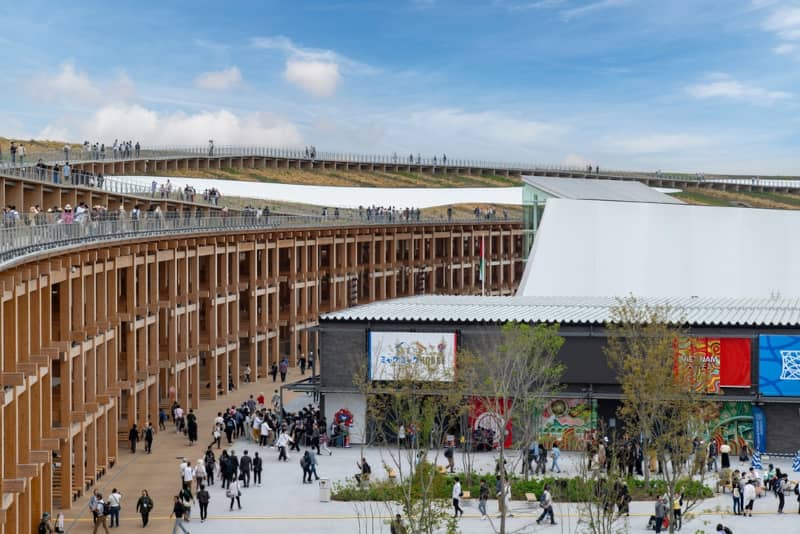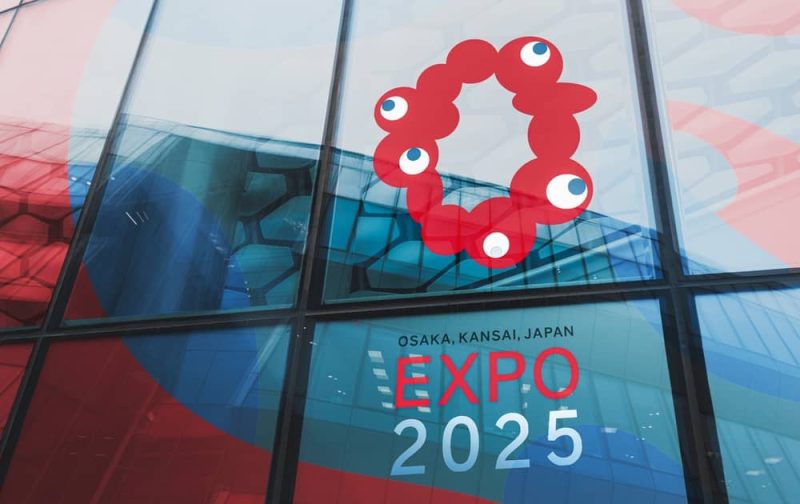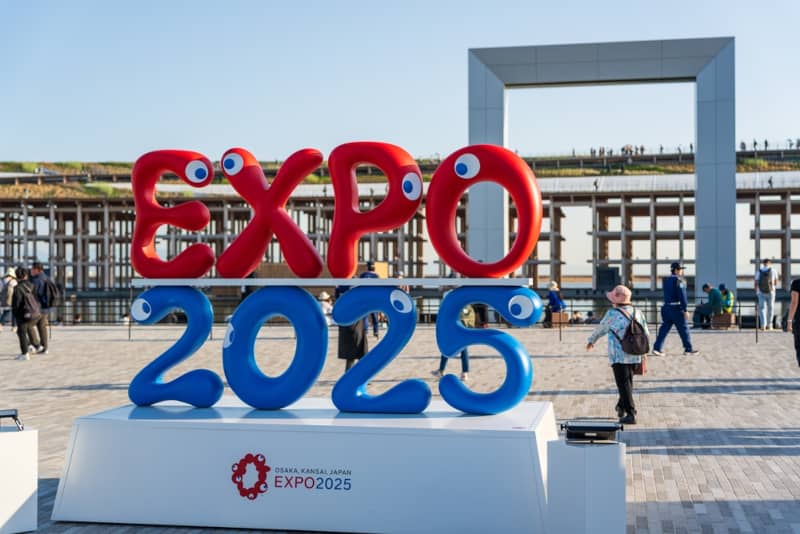World expos are global gatherings of nations that take place every 5 years with the aim of finding solutions to current challenges. 2025’s event in Osaka, Japan, marked one of the most ambitious expositions to date.
Held, from April to October 2025, it showcased how new ideas can be used to improve our everyday lives. Under the theme, ‘Designing Future Society for Our Lives’, it included concepts based on technology, sustainability, and creativity.
Osaka, which is in the Kansai region of Honshu, has now hosted three World Expo events; it previously held the exhibition in 1970 and 1990.
This post explains what made Expo 2025 Osaka unique, its key features, and how its ideas continue to inspire innovation across Japan and beyond.
Table of Contents
Where in Osaka was Expo 2025 held?
The 2025 Expo took place on Yumeshima Island, a man-made island in Osaka Bay.
The Expo site itself has an area of 1.55 km2 was built with advanced infrastructure to make it eco-friendly. A key aspect of the design was a walkable circular structure made of timber that surrounded the building, drawing inspiration from Japan’s historical wood construction traditions.

Sou Fujimoto, the architect in charge of developing the site, explained to Designboom:
“On the rooftop, visitors can go up and experience a lifted surface that resembles a bank, allowing them to appreciate the sky above and feel completely immersed in the environment.”
After the Expo, the Yumeshima site entered into a new phase of development. Much of the infrastructure is being repurposed for future projects, including a new entertainment district, business facilities, and the planned Osaka integrated resort complex.
Key figures from Osaka’s Expo 2025
Expo 2025 Osaka, Kansai was one of the largest international events ever held in Japan. Here are some of the key facts about the exposition:
- Over 29 million visitors attended the event over its 6 month run.
- Around 3.4 million participants helped run the expo, including delegates, staff, and media representatives.
- More than 165 countries, regions, and international organizations took part
- Over 60 pavilions showcased digital innovations, sustainability initiatives, and more.
Tens of thousands of volunteers helped the event run smoothly.
What was the theme of Expo 2025 in Osaka?
The Expo 2025 theme was Designing Future Society for Our Lives. It aimed to make people think about how they want to live in the future and hoped to promote the creation of sustainable societies.
The Osaka World Expo theme was selected in response to ongoing social changes. The development of technology, such as AI and biotechnology, will have a significant impact on humankind, including increasing life expectancy.

The theme was also shaped by COVID-19. The global pandemic led to changes in people’s values and lifestyles and left the world facing new challenges. Expo 2025 was an opportunity for the world to come together and discuss the theme of ‘life’.
Designing Future Society for Our Lives had 3 sub–themes:
- Connecting lives: Building communities and engagement through information technology and data-driven societies
- Empowering lives: Improving the lives of individuals and helping them reach their potential with AI and robotics
- Saving lives: Protecting life against infectious diseases and how to prevent disasters
People’s Living Lab concept
The core concept of the 2025 event was ‘People’s Living Lab’. This laboratory for a future society was designed to act as:
- A space for people from around the world to view exhibits and co-create future society
- An online platform for sharing challenges and solutions
- A place to bring together knowledge, share ideas, and help resolve global issues
What were the goals of Expo 2025?
The main goals of Osaka’s World Expo were focused on promoting a society that achieves the Sustainable Development Goals (SDGs) set out by the United Nations.
Some specific targets for international development addressed in the event included:
- Promoting international peace and partnership
- Eliminating poverty and hunger
- Tackling inequality
- Advancing climate action
- Providing universal access to clean water and sanitation
- Expanding affordable, clean energy
- Building sustainable cities and communities
- Encouraging responsible consumption and production
- Promoting good health and wellbeing
- Providing quality education for all
- Boosting work opportunities and economic growth
- Strengthening industry, innovation, and infrastructure
Impact of the Osaka 2025 Expo
Expo 2025 Osaka, Kansai was regarded as a resounding success, both by Japanese organizers and international participants.
The Ministry of Economy, Trade and Industry (METI) estimated an economic ripple effect of around ¥2 trillion (around $13 billion) from tourism, construction, and regional development.
In 2024, the organizers achieved ISO 20121 certification for event sustainability management, meaning that environmental and social performance were carefully monitored throughout planning and operations. This has helped to set a promising precedent for other large-scale events in Japan.
The Expo’s infrastructure site on Yumeshima Island is a central part of Osaka’s long-term growth strategy. It will be home to future projects in business, tourism, and smart-city innovation.
Expo 2025 logo and mascot
A competition was held to design the logo for Expo 2025. The jury met in August 2020 to select the best logo out of more than 5,000 entries.
The selected logo is an irregular ring of red circles. The logo’s creator, Shimada Tamotu, explained that the circles represent living cells, or a chain of DNA, tying it to the Expo 2025 theme.

As Osaka is often referred to as Japan’s City of Water, the Expo 2025 mascot is a shapeshifter that can change its form, like water. The logo is incorporated into the mascot’s face.
Expo 2025 participants
Many countries, regions, and international organizations participated in the Expo 2025 in Osaka, including:
- African Union
- ASEAN
- European Union
- International Red Cross and Red Crescent Movement
- International Solar Alliance
- International Science and Technology Center
- ITER
- Pacific Islands Forum
- United Nations
56 countries and regions have pavilions for the Expo, including:
- Australia
- Austria
- Belgium
- Brazil
- Canada
- China
- Czech Republic
- Germany
- Italy
- Japan
- Luxembourg
- Netherlands
- Oman
- Poland
- Saudi Arabia
- Slovakia
- South Korea
- Spain
- Switzerland
- Nordic Region (Denmark, Finland, Iceland, Norway, and Sweden)
For example, the Netherlands pavilion focused on the theme “Common Ground: creating a new dawn together.” It was designed in the shape of an illuminated sphere to symbolize clean energy and sustainability, as well as the rising sun.
If you would like to see the photos and themes of each pavilion, you can visit the official participants’ page.
